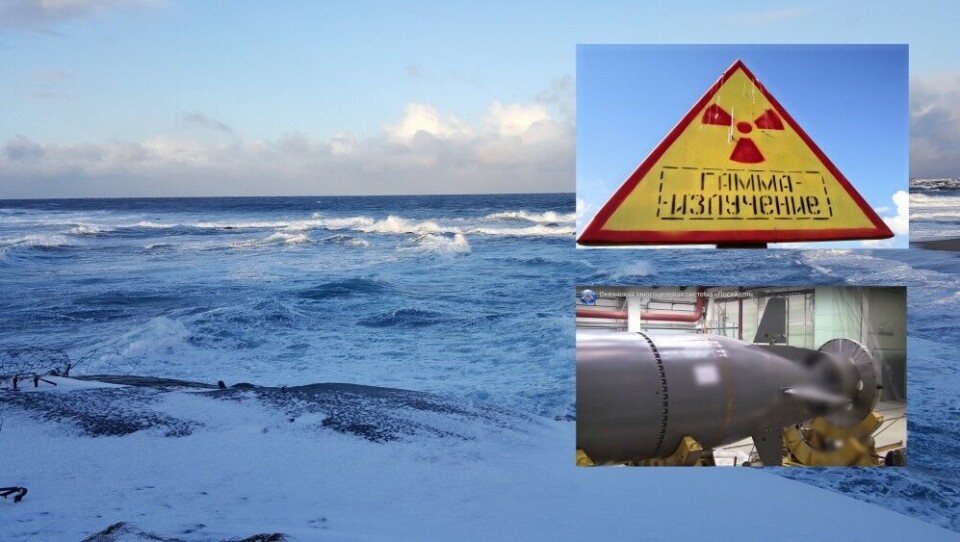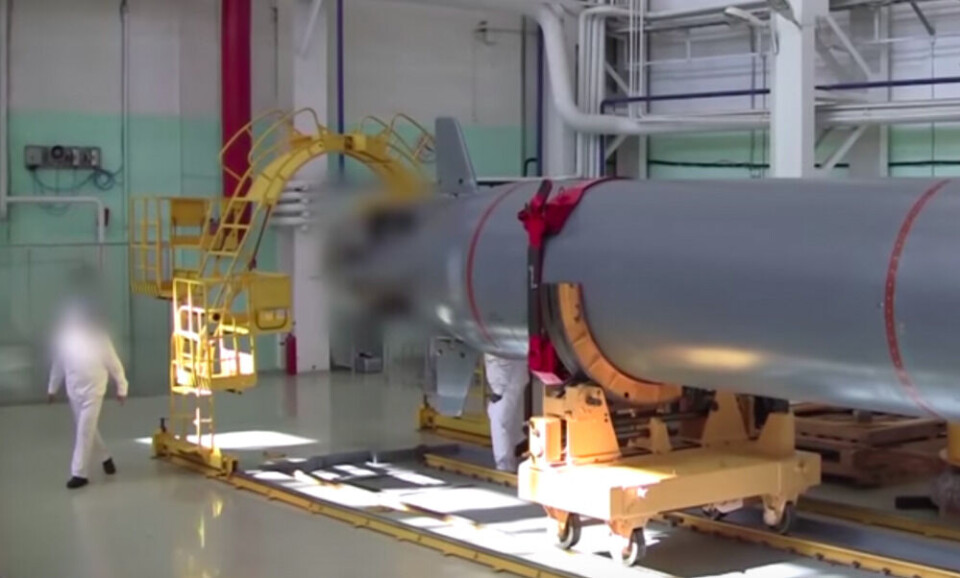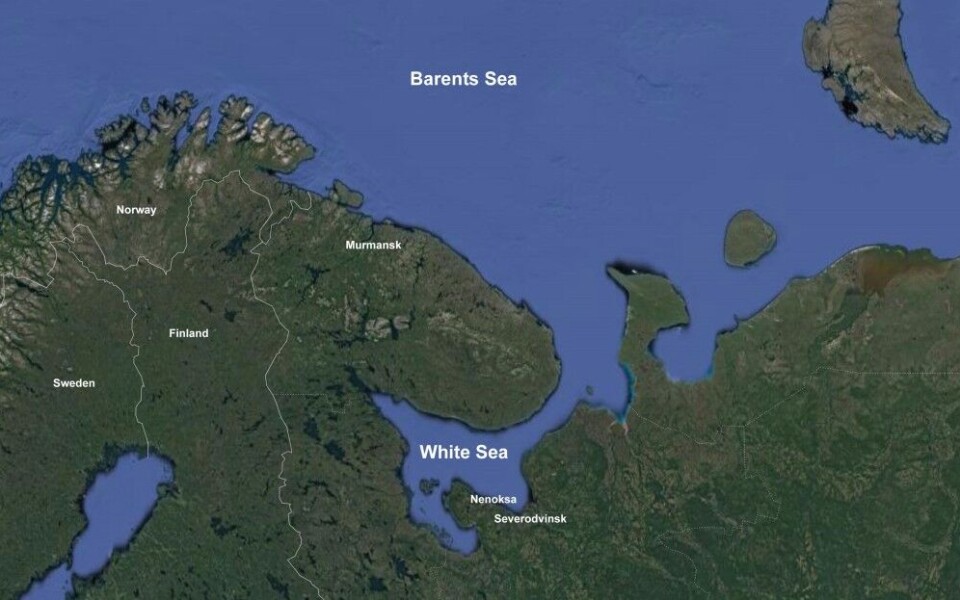
Russia's 'doomsday drone' prepares for testing
One year after the fatal accident with a nuclear-powered missile in the White Sea, Russia's weapon designers say a test launch the Poseidon nuclear powered underwater drone will take place this fall.
The test-launch will take place from the “Belgorod” submarine, a source in the military-industrial complex told RIA Novosti.
The drone, formed as a giant torpedo, is built to carry a several megatons nuclear warhead and is described by weapons analysts as a “doomsday nuke”. Powered by a small nuclear reactor, the Poseidon has a believed range of 10,000 km across the world’s oceans.
Launched from the Barents Sea or other waters in the Arctic, the drone can autonomously cross the North Atlantic. If detonated outside the east coast of the United States, the nuclear warhead could create a several tens of meters high tsunami wave additional to damage caused by the nuclear blast itself.
The Barents Observer first reported about the existence of the weapon in 2016. In March 2018, President Vladimir Putin confirmed the existence of the upcoming giant underwater drone.
Poseidon was one of six new strategic nuclear weapons presented by the President.
In July 2018, Russia’s Ministry of Defense released a video showing the workshop where the drone was assembled and an animated film demonstrating how the drone potentially could be used in a real warfare situation.

One of Kremlin’s controlled media, Radio Sputnik, on Tuesday aired an interview with former GRU colonel Aleksandr Zhilin who elaborates on the drone’s advantages.
“A drone has several advantages. A submarine with a crew on board is, of course, a powerful weapon, but there are certain restrictions on the human factor. The Poseidon can practically be on alert and perform assigned tasks at any time,” he says.
Today, Zhilin is head of the Centre for Study of Public Applied Problems of National Security with the Lobachevsky University in Nizhny Novgorod.
Safe against hackers
He calms those worrying about the potential of seeing the drones being hacked by computer terrorists.
“The appearance of this class of drones, of course, requires a lot of responsibility, because it is managed via software. It is clear that there are certain risks when in operation hackers can try to take control. But, talking with our engineers, designers, I came to the conclusion that there is massive protection against external interference,” Aleksandr Zhilin said to the radio channel.
With the deep-diving Poseidon drone, Russia will counter any U.S. missile defense systems and by that ensure deterrence, a second-strike capability.
The plan is to deploy 16 Poseidon drones on combat duty with the Northern Fleet. Two special-purpose submarines are to carry the weapons, the “Belgorod” and the “Khabarovsk”, both built at the Sevmash yard in Severodvinsk.
“Belgorod” is a prototype submarine based on a prolonged hull of an Oscar-II class nuclear-powered submarine. It was launched in April 2019, and is expected to start sea trials within a few months.

“Khabarovsk” sub
The second submarine to carry the Poseidon is “Khabarovsk” a special prototype submarine based on the hull of Russia’s 4th generation ballistic missile subs of the Borei-class.
RIA Novosti earlier this spring reported that “Khabarovsk” will be launched from the workshop at Sevmash in June this year at the earliest. Then, a two-years testing period will follow.
Nothing is said about where the testing of the Poseidon drone will take place, but new submarine-based weapons are normally tested in the White Sea, which has the advantage of not being international waters where other countries’ navies or spy-ships can sail. Also, the testing areas are close to Severodvinsk where the subs and drones are built.
Nuclear-powered missile explosion
Last August, a Burevestnik missile exploded during what is believed to have been a recovery operation. The explosion that killed five men and caused a radiation peak in nearby Severodvinsk happened at a barge located some four kilometers from the shore outside Nenoksa (also spelled Nyonoksa) missile test site.

Russian officials have not published any information about possible radioactive substances that could be released to the marine environment from the upcoming testing of the 24 meters long nuclear-powered underwater drone Poseidon.
In these unsettling times, the Barents Observer needs your support more than ever. If you like what we’re doing, please consider making a donation. Your financial contributions, however big or small, will help keep our independent news coming from the north, about the north.
From Norway you can VIPPS: 105792















